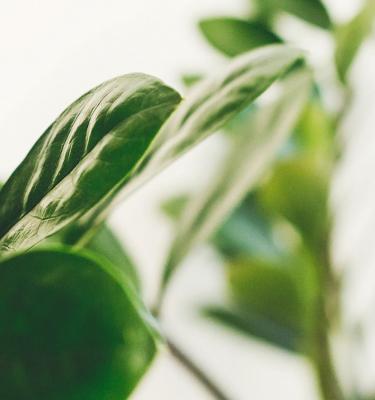

How to grow and care for Zanzibar Gem Plants
The Zanzibar Gem plant, also commonly called the ZZ Plant, is a low-maintenance houseplant characterised by its shiny, wide, oval-shaped leaves on long stems. Their lush, deep green appearance and tropical vibe often means people mistake them for artificial plants!
Zanzibar Gem plants make the perfect indoor plant for serial plant killers or those who love low-maintenance, no fuss plants. Because they grow from thick underground rhizomes that store water, they are very low water use. Allow the potting mix to completely dry out between waterings and make sure water doesn’t collect in saucers or coverpots.
Zanzibar Gem plants will be happiest growing in a bright spot with indirect sunlight, however, they can also handle very low-light situations too.
Top 5 steps to growing Zanzibar Gem plants
- Zanzibar Gem prefer a spot with medium to bright indirect light - direct sun can burn their leaves. But they will tolerate low light positions too.
- Use a premium, like Scotts Osmocote Premium Potting Mix for Indoor Plants to give your plant the best start possible
- Zanzibar Gem plants need good drainage and really hate constantly moist soil. Allow the potting mix to completely dry out between watering and tip out excess water from coverpots or saucers.
- Fertilise Zanzibar Gem with an indoor plant fertiliser like Scotts Osmocote Pour+Feed for Indoor Plants once a month during spring and summer, to encourage strong healthy growth.
- Yellowing leaves on your Zanzibar Gem could indicate too much water, while wrinkly or dropping leaves could be an indicator of not enough water.
Shopping List
- A Zanzibar Gem plant
- If growing in a pot
- A potting mix scoop or garden trowel
- Defender Pyrethrum Insect Spray
Growing Zanzibar Gem plants in a pot
Choose a pot for your Zanzibar Gem that’s no larger than 2 times the size of the original nursery pot - make sure it has drainage holes or use a black plastic pot that sits snugly inside a cover-pot or cache pot (pot with no holes).
Half fill your pot with Scotts Osmocote Premium Potting Mix for Indoor Plants and gently remove the Zanzibar Gem from the nursery pot and position it into the potting mix, backfill around root ball with more potting mix so that the potting mix is level with, or slightly below, the top of the pot.
Water your new Zanzibar Gem in well and tip out any excess water from the base of the coverpot or saucer (if using). Zanzibar Gem can tolerate (and prefer) drying out between waterings, so make sure the top 3-5cm of soil is dry before watering again. Zanzibar Gem hate ‘wet feet’, so don’t let water pool in the base of coverpots or in saucers as they’ll quickly rot if their potting mix remains soggy or waterlogged.
How to care for Zanzibar Gem
Fertilise Zanzibar Gem monthly in spring and summer with an indoor plant fertiliser to encourage new growth. Use Scotts Osmocote Pour+Feed for Indoor Plants - this is a simple to use ‘measure and pour’ feed which contains the right balance of nutrients. If you’d prefer a longer term fertilising product, with less applications, apply Scotts Osmocote Controlled Release Fertiliser for Indoor Plants in early spring and again in early autumn - this product feeds for up to 6 months.
Keep Zanzibar Gem plants away from strong bursts of hot or cold air (eg. From heating or air-conditioning vents) and if your air is particularly dry you could increase the humidity around your ZZ with either a humidifier or by grouping them together with other plants to create a more humid microclimate.
Remove any dead or damaged leaves at the Zanzibar Gem’s base with scissors to promote new growth. If the tips of the leaves go brown it could be too much sun, try decreasing the amount of direct sun the plant gets. Yellowing leaves on your Zanzibar Gem plant are a sign of too much water, while wrinkled leaves or leaves dropping is a sign of not enough water.
Pests & Diseases
Zanzibar Gems are pretty pest and disease resistant! But keep an eye out for distorted new growth and obvious signs of pests on the undersides of leaves. If scale, aphids or mealybugs are found - use Defender Pyrethrum Insect Spray to control them if needed.



